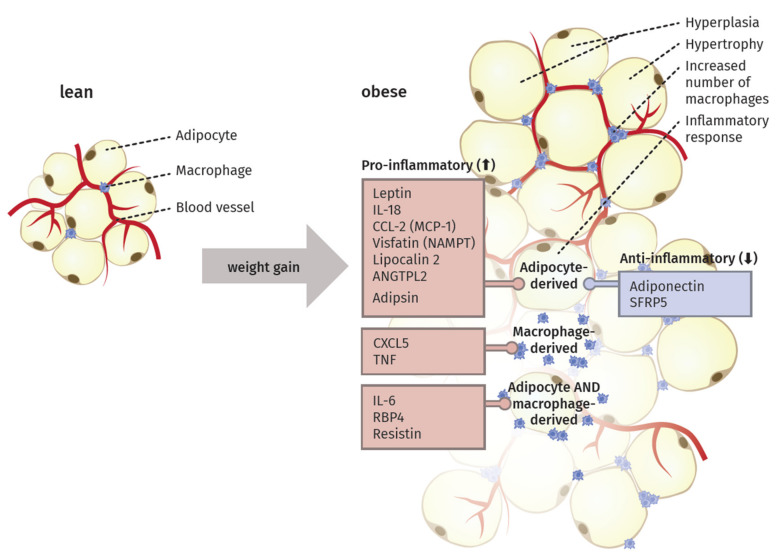Figure 1.
The remodeling process in adipose tissue during weight gain. White adipose tissue is primarily composed of adipocytes, macrophages and blood vessels. To cope with an elevated amount of triacylglycerols (TG) during weight gain, adipocytes increase in size (hyperplasia) and number (hypertrophy). This can further result in the apoptosis of adipocytes, chemotactic regulations, hypoxia and free fatty acids. All four mechanisms are discussed to foster the heightened migration of macrophages into the adipose tissue. Moreover, the secretions of different adipocytokines, produced in adipocytes, macrophages or in both cell type, are influenced. In general, anti-inflammatory secretory products are downregulated, whereas the secretion of pro-inflammatory adipocytokines is elevated. These developments provide a low-grad pro-inflammatory environment, which arises from the increased and remodeled adipose tissue in obese subjects.

